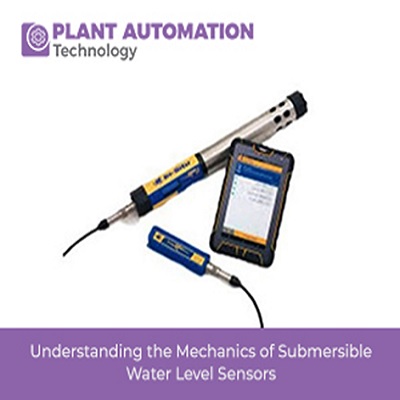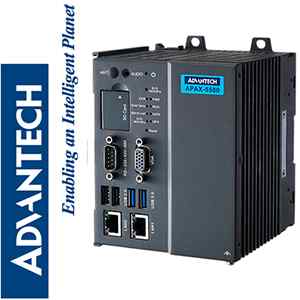Understanding the Mechanics of Submersible Water Level Sensors

Introduction
Submersible water level sensors, equipped with components such as the water tank float switch and water tank level sensor, are innovative devices designed to accurately measure and monitor water levels in submerged environments. They employ advanced mechanics and components to provide reliable data for effective water management. In this article, we will delve into the mechanics of submersible water level sensors, exploring their key components and how they operate.
Mechanism of submersible water level sensors
Unlike other types of sensors, submersible water level sensors are specifically engineered to operate underwater without compromising their functionality. They differ from other types of sensors by their underwater ability. They offer accurate readings, easy installation, and reliable performance in submerged applications.
The floating switch mechanism
The float switch, also known as the water tank float switch, is the pivotal component of submersible water level sensors. It enables precise measurement and monitoring of water levels in submerged environments. Submersible water level sensors are based on floating switches. This mechanism consists of a buoyant float that moves up and down with the water level. As the water level rises or falls, the float responds accordingly, activating a mechanical or electrical mechanism within the switch. This mechanism generates a signal indicating the specific water level reached.
Precise calibration
The floating switch of submersible water level sensors is meticulously calibrated to ensure accurate measurements. By calibrating the switch, manufacturers can customize the sensor's response to water level changes. This precision allows for reliable monitoring and control, preventing overflows or insufficient water supply.
Integration with control systems and indicators
The floating switch of a submersible water level sensor is connected to a control system or water tank level indicator. This linkage enables the transfer of the generated signal, which is then processed and presented in a user-friendly format. Control systems can activate pumps or valves based on water level data, while indicators offer visual or digital displays to monitor the current water level. These submersible water level sensors, with their precise calibration and reliable float switch mechanism, provide real-time data that can be easily interpreted and displayed through a water tank level indicator, enabling users to monitor water levels easily and take necessary actions accordingly.
Effective sealing mechanisms
The water sensor, a vital component of submersible water level sensors, detects and converts changes in water levels into electrical signals. This allows accurate measurement and monitoring. Given the submersible nature of these sensors, it is crucial to protect their internal components from water ingress. Submersible water level sensors employ effective sealing mechanisms, such as sealed enclosures, to ensure a watertight environment. These seals preserve sensor functionality and accuracy, even when fully submerged.
Durability and corrosion resistance
Submersible water level sensors are designed for underwater environments. They are constructed using durable materials that exhibit excellent corrosion resistance. This ensures the sensor's longevity, allowing it to provide accurate readings over extended periods without degradation.
Additional features for enhanced performance
To further enhance performance, some submersible water level sensors incorporate additional features. For example, anti-fouling mechanisms prevent debris or algae accumulation on the sensor's surface, ensuring accurate readings. Some sensors also offer temperature compensation to account for changes in water density due to temperature fluctuations.
Operational mechanism
Submersible water level sensors are straightforward yet effective. When the water level changes, the buoyant float attached to the float switch moves correspondingly. As it reaches a specific position, it triggers the switch mechanism, generating a signal. This signal is then transmitted to the control system or an indicator, providing real-time information about the water level.
Accuracy and reliability
Submersible water level sensors are known for their high accuracy and reliability. The precision calibration of the float switch mechanism ensures consistent and precise measurements, allowing accurate water level monitoring. This reliability is vital in preventing overflows or underflows, as well as avoiding damage to equipment or systems due to insufficient water levels. By providing real-time and accurate data, submersible water level sensors enable prompt decision-making, leading to improved operational efficiency and resource management.
Maintenance and longevity
Submersible water level sensors are durable and require minimal maintenance. Sealed enclosures and corrosion-resistant materials protect internal components from water damage, extending their lifespan. Regular inspection and cleaning, especially of the floating mechanism, is recommended to ensure optimal performance. However, the robust design and effective sealing mechanisms minimize frequent maintenance, making submersible water level sensors a reliable and convenient solution.
Integration with automation systems
Submersible water level sensors can be seamlessly integrated with automation systems, allowing advanced control and monitoring capabilities. By connecting the sensor to a central control unit, water levels can be monitored remotely, and automatic actions can be triggered based on predefined thresholds. Automating operations streamlines operations enhances efficiency, and reduces manual labor.
Considerations for installation
When installing submersible water level sensors, it is essential to consider factors such as the depth of the water source, the type of enclosure required, and compatibility with existing control systems. Proper installation techniques, such as securely mounting the sensor or ensuring proper submersion, should be followed to optimize performance. Consulting the manufacturer's guidelines and seeking professional assistance can ensure accurate installation and reliable operation.
Advancements in technology
Advancements in technology have led to more sophisticated submersible water level sensors. For example, wireless connectivity allows remote monitoring and data transmission, enhancing accessibility and convenience. Additionally, sensor data integration with cloud-based platforms and data analytics enables real-time insights, predictive maintenance, and improved decision-making.
Applications in various industries
Submersible water level sensors find applications across a wide range of industries. In residential settings, they are commonly used in water tanks to monitor water levels and prevent overflows or dry-running situations. This ensures a consistent and uninterrupted water supply while optimizing water usage. In agriculture, submersible sensors play a vital role in irrigation systems, enabling farmers to efficiently manage water resources and maintain proper hydration for crops. Industrial sectors, such as manufacturing and utilities, rely on submersible water level sensors to monitor water levels in cooling towers, boilers, and chemical mixing tanks. This ensures optimal operation, prevents equipment damage, and maintains safe working conditions.
| Also Read: Sensors in the Internet of Things (IoT): Enhancing Connectivity and Data Collection |
Conclusion
Submersible water level sensors are invaluable tools for accurately measuring and monitoring water levels in submerged environments. Their precise calibration, reliable mechanics, and integration capabilities make them essential in various industries. With their accuracy, durability, and advancements in technology, submersible water level sensors contribute to effective water resource management, operational efficiency, and water-related issue prevention. By understanding their mechanics and considering factors like installation and maintenance, industries can harness the full potential of these sensors. This will enable them to optimize their water management processes.











